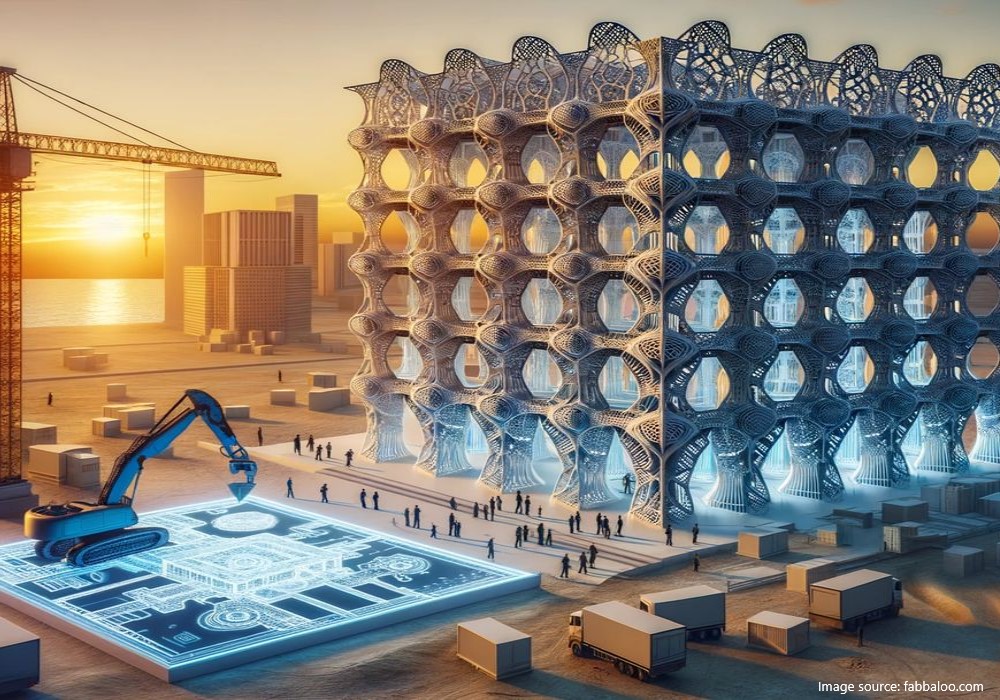
The integration of generative design with Building Information Modeling (BIM) represents a transformative leap in how architects, engineers, and construction professionals approach design and project execution. While BIM has long been celebrated for its ability to centralize data and foster collaboration, generative design adds a new dimension—leveraging algorithms and artificial intelligence to explore countless design possibilities. Together, these technologies promise to revolutionize workflows, optimize designs, and address complex challenges in the built environment. So, what does the future hold for this powerful combination?
Expanding Design Horizons
Generative design’s ability to create and evaluate hundreds or even thousands of design options in a fraction of the time is perhaps its most striking feature. When integrated with BIM, this capability becomes even more potent. BIM provides the data-rich environment necessary for generative design algorithms to operate effectively. For example, by inputting project requirements—such as site constraints, energy efficiency targets, and material preferences—into a generative design tool linked with BIM, professionals can explore optimized solutions that balance aesthetics, functionality, and sustainability.
This approach moves beyond the limitations of traditional design workflows, where iterative processes often require significant manual effort. Instead, generative design automates the exploration phase, leaving architects and engineers free to focus on refining the best solutions and ensuring alignment with project goals.
Enhancing Sustainability
Sustainability is at the forefront of modern construction, and the generative design-BIM synergy has enormous potential to advance green building practices. By incorporating performance analysis directly into the design process, generative design can evaluate factors like energy consumption, daylighting, and carbon footprint. BIM provides the necessary data framework, including material properties, energy models, and lifecycle assessments, enabling designers to make informed decisions at every stage.
Imagine designing a skyscraper where every aspect, from its orientation to the choice of facade materials, is optimized for energy efficiency. Generative design tools can propose configurations that reduce energy use, minimize waste, and enhance occupant comfort. These solutions are then embedded into the BIM model, ensuring seamless integration with construction workflows.
Optimizing Space Utilization
Space utilization is a critical concern in both urban planning and interior design. Generative design algorithms excel at optimizing layouts for maximum functionality and comfort, whether designing office spaces, residential buildings, or public infrastructure. When paired with BIM, the proposed layouts can be immediately validated against structural, mechanical, and compliance constraints.
For instance, a healthcare facility could use generative design to ensure that patient rooms, operating theatres, and staff areas are arranged to maximize efficiency and accessibility. The integration with BIM ensures that these layouts account for real-world constraints, such as HVAC system routing and fire safety regulations, streamlining the transition from design to implementation.
Accelerating Construction Schedules
Generative design not only enhances the design phase but also contributes to more efficient construction planning. By simulating various construction sequences and methodologies, generative design can identify strategies that reduce project timelines and costs. BIM’s detailed representation of the project enables these simulations to be grounded in reality, ensuring practical applicability.
For example, a generative design tool might suggest modular construction methods that optimize material use and minimize on-site labour. BIM models can then incorporate these suggestions, providing a comprehensive roadmap that integrates design, fabrication, and construction processes.
Overcoming Complex Challenges
Large-scale projects, such as airports, stadiums, or mixed-use developments, often involve intricate challenges that require innovative solutions. Generative design’s ability to process vast amounts of data and propose unconventional yet effective solutions make it invaluable in these contexts. When coupled with BIM, these solutions are not only conceptual but actionable, complete with detailed documentation and clash detection.
Consider the design of an airport terminal, where passenger flow, security requirements, and retail space optimization must all be balanced. Generative design can analyze these factors holistically, producing layouts that meet diverse needs. The BIM model ensures that these designs are constructible and maintainable, bridging the gap between vision and reality.
Looking Ahead
The convergence of generative design and BIM is still in its early stages, but its potential is immense. As technology advances, we can expect more seamless integration, improved user interfaces, and broader adoption across the industry. Cloud computing, artificial intelligence, and IoT integration will further enhance the capabilities of these tools, enabling real-time feedback and continuous improvement.
Ultimately, the collaboration between generative design and BIM is about empowerment. It empowers designers to push boundaries, contractors to work more efficiently, and owners to realize projects that are not only beautiful but also sustainable, functional, and cost-effective.
The future of the built environment is bright, and this dynamic duo is leading the way.
Draftech – Your Project, Our Expertise
Testimonials
Very professional and efficient organization. Delivered a great product to a tight deadline.
ACE Power
Karl and the team are very professional and have a vast knowledge of BIM coordination.
Dwayne Willaims Babinda Electrics
We had multiple large projects with tight deadlines and needed a company we could trust. The teams delivery, attention to detail and understanding of what is being designed is always executed to a high standard.
Martin O’Donovan Envar Engineers
Draftech offered a flexible and reliable approach to working collaboratively with our team. They met our expectations and quality requirements and also offered up new ideas.
Draftech have proven to be a valuable and trustworthy resource and we will continue to work with Draftech on other projects.
Simon Marsden Umow Lai
Draftech is different from others in the professionalism and features they provide.
The ability to walk through projects in real time online provides invaluable insight into problem areas and helps provide an efficient resolution on the spot without many phone calls, emails and the necessity for us to paw through countless drawings to understand the issues.
Todd Morris Manager - Air mech
Draftech were put forward to FIP Electrical as the solution to Coordinate, Model, carry out clash detection, provide Electrical Services Shop Drawings, as built documentation and completed electrical model.
Simon Thorpe FIP Electrical
In close collaboration Draftech set up all our systems and model deliverables. In this process Draftech have proven to be a valuable resource for us and demonstrated commitment, understanding and professionalism.
David Skelley DJCoalition
Draftech’s attention to detail and proactive nature throughout the project assisted us in identifying issues before becoming evident on site, saving us both time and unexpected costs.
Matt Payne PJM Engineering Services
They delivered very high quality Revit models and associated 2D documentation at key milestones, working to a tight budget and in strict accordance with the Architects’ BIM requirements.
Peter Thomas Geoff Hesford
We found Draftech’s work to be of high standard and the team delivered exactly as agreed, in fact, when we considered the project complete, Draftech put further resources into the project as they were not satisfied.
John Johnson Beca
Engaging Draftech during design gave us the tools to make smart decisions.
Hansen Yuncken Design Manager - Michael Harkins
The drafting service is timely, reliable and fit for purpose for the built environment.
Peter Harvey Harvey Industries
Draftech stands apart from other drafting services that we have previously used in their attention to detail and ability to adapt to the individual client’s requirements.
Doug Holt McCaig Aircon
I can confidently recommend Draftech as a solid and reliable supplier, and experts in their field. I look forward to working with them again in the near future.
Chris Behan Norman Disney & Young
After seeing the benefits Draftech provided us on the Townsville Hospital Redevelopment we have set up a relationship with Draftech and intend to continue to use their BIM knowledge and skills for our future projects.
Brad Lund Energy Power Systems
Draftech has no competition as they are in a class of their own.
John Boyes Babinda Electrics
Draftech Developments Drafting and Design Capabilities, in conjunction with their outstanding level of Client service and support has provided great solutions to our engineering and Drafting Design portions within our Gorgon Barrow Island Project.
Aaron Hazelton Applied Electro Systems Pty Ltd
Draftech set up necessary systems and workflows very quickly, but also setup auditable estimating and weekly cost tracking processes that we utilised, requiring little maintenance.
TOM PURDON MPM GROUP




























